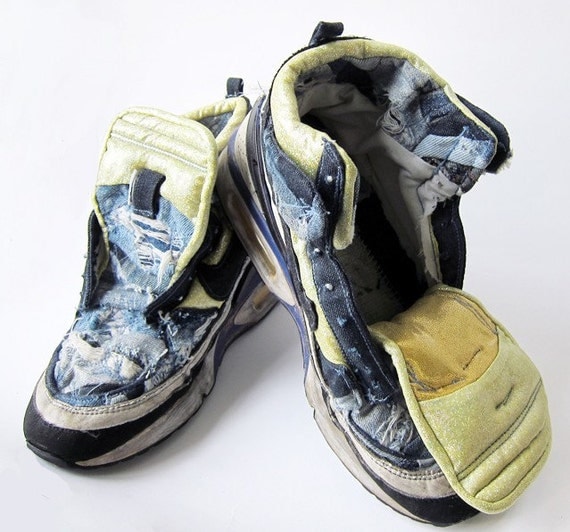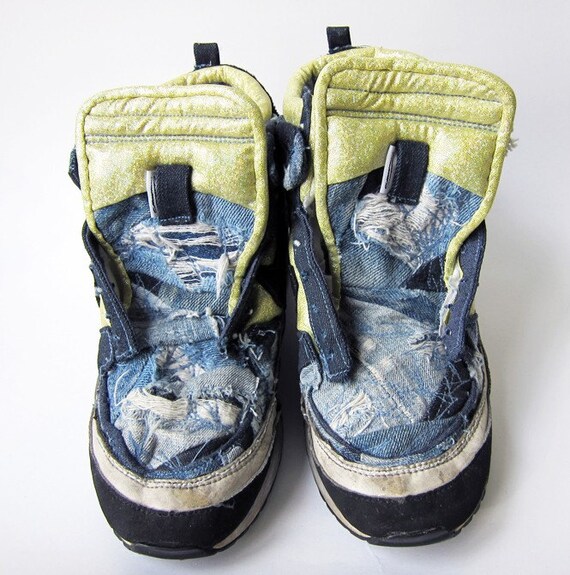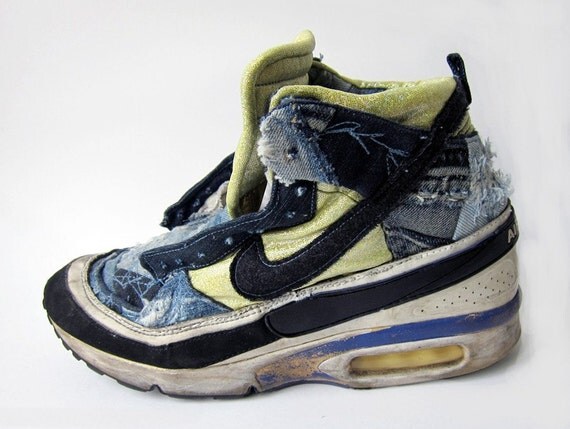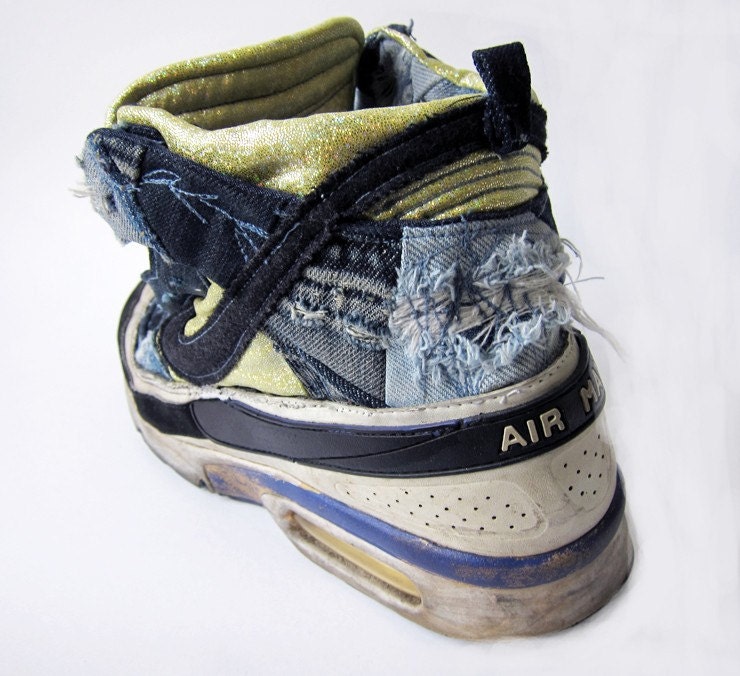LVMH, Home Depot, WikiLeaks: Intellectual Property
December 07, 2010, 6:39 AM EST
By Victoria Slind-Flor
(This is a daily report on global news about patents, trademarks, copyright and other intellectual property topics. Adds MedioStream Inc. item to patent section.)
Dec. 7 (Bloomberg) -- LVMH Moet Hennessy Louis Vuitton SA, the world’s largest luxury-goods maker, filed a U.S. trade complaint seeking to block U.S. imports from China of handbags, luggage and other accessories that copy the Louis Vuitton look.
Some Chinese companies are infringing trademarks “through a systematic copying of Louis Vuitton product lines, bag styles and overall identity,” the company said in a complaint filed Dec. 3 with the U.S. International Trade Commission in Washington.
LVMH, based in Paris, has been aggressive in trying to curtail the amount of counterfeit goods that copy its luxury brands. It sued EBay Inc., claiming the online auction company didn’t work hard enough to prevent sales of knockoffs on its site. Japan’s biggest online retailer, Rakuten Inc., signed a deal with LVMH in September on plans to combat counterfeiting.
Louis Vuitton has “invested tens of millions of dollars and decades of time and effort to create consumer recognition” of the LV mark, the company said in the ITC complaint.
LVMH said in October that Louis Vuitton helped propel sales at its fashion and leather-goods unit 26 percent in the third quarter. The unit generated 6.3 billion euros ($8.24 billion) in sales last year, or 37 percent of the company’s revenue.
In the ITC case, Louis Vuitton is seeking an order from the trade commission that would ban all imports of counterfeit Louis Vuitton products. It claims a Chinese couple who live in Arcadia, California, have set up a series of shell companies in China and the U.S. to make and sell the knockoffs in what Louis Vuitton called “well organized and deceptive scams.”
The complaint also cites businesses in the U.S. that it contends are selling counterfeits. The ITC has the power to issue an order blocking imports of the copycat products regardless of the name of the company selling them.
Mark Ramsey, owner of Alpha One Sourcing LLC, which runs the Inspired Bagger website in Dallas said he hasn’t bought handbags from the manufacturers or importers named in the complaint and doesn’t know why his site, which sells 3,000 different styles, was listed.
“We don’t claim to sell Louis Vuitton,” he said in a telephone interview. “We say they are ‘designer-inspired,’ but we don’t mention a name. We never wanted to dabble in that. We know the seriousness of it.”
The websites named in the ITC complaint weren’t among the 82 domain names shut down last month by the U.S. Justice Department in a crack down on online sales of fake brand-name goods. Efforts to reach the California couple and other companies named in the complaint were unsuccessful.
Louis Vuitton, which said its monogram was created in 1896 to “deter imitators,” initiated an average of 39 raids a day in 2009 and seized thousands of counterfeit products, according to a fact-sheet the company distributed. The company said it sells its product only in Louis Vuitton stores or through the company’s website.
The complaint is In the Matter of Certain Handbags, Luggage, Accessories and Packaging Thereof, 2772, U.S. International Trade Commission (Washington).
Home Depot Sues Beer Depot, Claims Trademarks Are Infringed
Home Depot Inc., the largest U.S. home-improvement retailer, sued a Florida brewing-supply retailer for trademark infringement.
The Beer Depot of Miami is accused of infringing the home- products retailer’s marks by using too-similar signage and colors in ads, according to the complaint filed Dec. 3 in federal court in Miami.
Customers are confused and Beer Depot is hitchhiking on the goodwill Home Depot has built over the years with its customers, according to court papers.
Atlanta-based Home Depot says Beer Depot’s actions are likely to damage the home-products company’s reputation with consumers, and asked the court to bar any unauthorized use of the marks.
Additionally, Home Depot asked for a court order for the destruction of all allegedly infringing signs and promotional material, and for awards of the beer company’s profits flowing from the infringement. It also asked for money damages, and awards of litigation costs and attorney fees.
Beer Depot didn’t respond immediately to an e-mailed request for comment.
Home Depot is represented by Jezabel Llorente of Jezabel Llorente PA, and Richard J. Groos and Brandon M. Ress of Houston’s Fulbright & Jaworski LLP.
The case is Home Depot USA Inc. v. the Beer Depot, 1:10-cv- 24299-JAL, U.S. District Court, Southern District of Florida (Miami).
For more trademark news, click here.
Copyright
Viacom Sued Over Airing of 1985 ‘Bears Superbowl Shuffle’ Video
Viacom Inc. was sued for copyright infringement by the owner of the copyright for a music video of the 1985 Chicago Bears football team.
The suit, filed in federal court in Chicago, is related to what the copyright owner claims is the unauthorized showing of the “1985 Bears Superbowl Shuffle” on Viacom’s MTV and VH1 websites and television channels.
According to court papers, segments of the video were aired in 2007 and 2008 on Viacom’s television channels and as recently as Oct. 26 on the MTV website.
Renaissance Marketing Corp. and Julia Meyer, both of Chicago, are the owners of the copyrights, they said in the complaint. They said they sell the video for commercial purposes, and claim they have been damaged by the defendants’ action.
The Bears won the Super Bowl game in 1986, and, with the 25th anniversary of that win coming up in January, there is presently “additional interest from the public” in the video, according to court papers.
The copyright owners claim the unauthorized showings of the video are “willful and deliberate and in utter disregard” for their rights. Viacom didn’t immediately respond to an e-mailed request for comment.
Renaissance and Meyer asked the court for money damages equal to the amount by which Viacom was “unjustly enriched” by its alleged infringement.
The copyright owners are represented by Paul F. Markoff of the Markoff Law Firm LLC of Chicago.
The case is Renaissance Marketing Corp. v. Viacom Inc., 1:10-cv-07667, U.S. District Court, Northern District of Illinois (Chicago).
Pirate Party Says It Will Make WikiLeaks Content Available
The Pirate Party, an anti-copyright political party founded in Sweden, said in a statement it will make WikiLeaks content available worldwide on a mirroring infrastructure.
The group said it was now hosting WikiLeaks content so that the recently released classified U.S. diplomatic cables will remain available online.
WikiLeaks, the whistle-blowing website, began releasing about 250,000 such cables Nov. 28. Shortly after the release began, its own website was hit with denial-of-service attacks, which hackers overwhelmed with repeated requests for data.
On Dec. 4, EBay Inc.’s PayPal payment-processing system closed Wikileak’s account for what it said was a violation of its acceptable use policy. Amazon.com Inc. dropped the WikiLeaks site from its Web servers earlier this month, and on Nov. 28 Secretary of State Hillary Clinton said the U.S. government “strongly condemns” the release of the cables.
For more copyright news, click here.
Patents
Myhrvold, Sous-Vide Proponent, Seeks Microwave-Cooking Patent
Although Nathan Myhrvold of Intellectual Ventures is producing a cookbook focusing on the sous-vide method of cooking, he has a published and pending U.S. patent application that focuses on the more humble microwave.
Myrhvold’s book, co-written with scientist/chef Chris Young and Mexime Bilet, the head chef at Bellevue, Washington-based Intellectual Ventures, is due in May with a listed price of $625.
The five-volume cookbook -- “Modernist Cuisine”: The Art and Science of Cooking” -- has a strong emphasis on sous-vide, which is a method of food preparation by encasing the food item in vacuum-sealed plastic and cooking very slowly in a warm water bath.
The patent application -- 2010087224 -- covers a method of controlling the microwave cooking process so that the relative amount of power absorbed by the food can be monitored. The microwave chamber can be equipped with a radiation detector configured to measure the microwave power transmitted through and not absorbed by the food.
Myhrvold and his five co-inventors applied for the patent in October 2009, with the assistance of the Constellation Law Group PLLC of Tracyton, Washington.
Apple, Microsoft Persuade Court Case Belongs in California
Apple Inc. and Microsoft Corp. are among the 12 companies that persuaded a federal appeals court to remove a patent- infringement case from Texas and send it off to be tried in California.
The Washington-based Court of Appeals for the Federal Circuit, which hears appeals of patent cases, said in a Dec. 3 ruling that MedioStream Inc. of Los Altos, California, presented “no factor that remotely favors keeping this case in the Eastern District of Texas.” MedioStream filed its patent infringement case in federal court in Marshall, Texas, in August 2007.
That Texas court is perceived as being friendly to patents, and many targets of patent infringement try to get their cases moved to other venues.
The appeals court noted that most of the companies sued by MedioStream are on the West Coast, and that the majority of the witnesses, as well as the inventor and attorney live within or near to federal court in Northern California.
If these were all required to travel to Texas, they would “likely incur significant expenses for airfare, meals and lodging, as well as losses in productivity from time spent away from work,” the court said. The court ordered that the case be moved to the northern California court.
The original case is MedioStream Inc. v. Acer America Corp., 2:07-cv-00376-CE, U.S. District Court, Eastern District of Texas. The appeals court case is In re Acer America, 10- M0942, U.S. Court of Appeals for the Federal Circuit.
For more patent news, click here.
IP Moves
Foley Brings in IP Specialty Team from Choate Hall & Stewart
Foley & Lardner LLP hired a team of IP specialists from Boston’s Choate Hall & Stewart LLP, the Milwaukee-based firm said in a statement.
The new hires are two partners, one associate, three patent agents and one paralegal. The partners are John D. Lanza and Christopher J. McKenna.
Lanza, who does patent acquisition, technology transactions and licensing and patent litigation, has represented clients in the electrical and software industries.
He has an undergraduate degree and a master’s degree in electrical engineering from Georgia Institute of Technology and a law degree from Northeastern University.
McKenna represents clients in patent and trade-secret disputes involving software and information technology. He’s litigated patent cases, and also does IP strategy counseling and patent-portfolio development.
He has an undergraduate degree in electrical engineering from the University of Lowell and a law degree from Suffolk University.
--With assistance from Susan Decker and Nicole Gaouette in Washington and Joseph Galante in San Francisco. Editors: Glenn Holdcraft, Peter Blumberg.
To contact the reporter on this story: Victoria Slind-Flor in Oakland, California, at vslindflor@bloomberg.net.
To contact the editor responsible for this story: David E. Rovella at drovella@bloomberg.net.
 Our society tries too hard. We’re always reading blogs and searching for that one silver bullet, that single piece of brilliant advice that will make all the difference. But you know what? There’s no such thing.
Our society tries too hard. We’re always reading blogs and searching for that one silver bullet, that single piece of brilliant advice that will make all the difference. But you know what? There’s no such thing.














